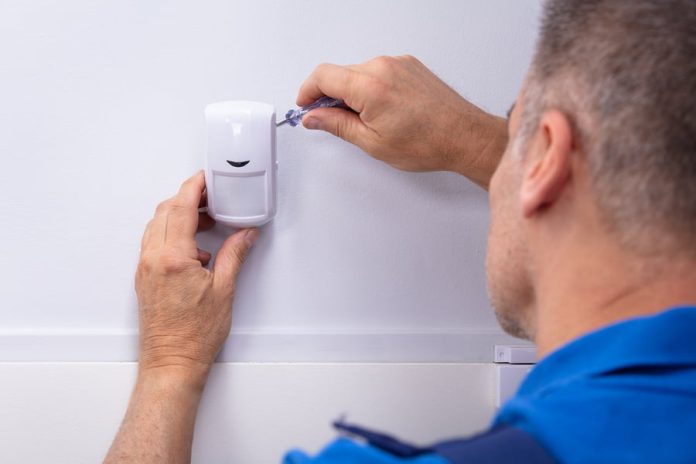What’s the best passive infrared sensor technology available today for intrusion detection systems?
A: KING of pure passive infrared intrusion detectors is the quadruple element sensor. It works on a different principle to the dual edge units that monitor passage from 1 part of a zone to another.
The quad principle of detection aims to reduce the chance of false alarm caused by pets or small animals by clever design and without using tune-out processing, which cab lower a sensor’s overall detection discernment.
Combining quad element and advanced signal processing should mean an even better sensor. Quads break each zone into 4 separate parts – imagine them as 4 boxes forming a square but remaining distinct from each other. Each of the elements has a different value. The 2 upper boxes are designated A+ and A- while the lower 2 boxes are B+ and B-. Quads monitor these to see if they are being filled by the IRE signal of an intruder.
It works like this. Each A box is matched negative and positive and it’s the same with the B boxes. As the processor monitors each of the 4 elements in a zone it considers the IRE level. When this breaks a certain threshold, the processor starts to calculate an equation over and over. This equation is [A+B] – [A-B] = 0. So long as the result of this calculation adds up to 0 then no alarm is activated.
If a mouse moves in the target area and its signal fills only 1 zone element with an IRE signal having a value of 2uJ. The processor computes this as [0+2] – [0-2] = [+2] – [-2] = 0 and there’s no alarm signal generated. But if an intruder with a value of 10uJ disturbs 2 elements then the processor calculates [10+10] – [10-10] = 20 – [0] = 20 – 0 = 20. As 10 is the alarm threshold, a value of 20 means alarm activation.
In the field the quad is constantly running computations which essentially represent questions like: “Was there a disturbance in any of the 4 elements? What was its value? Is it still there? Has it moved?”
Are quad PIRs better than microwave/PIR dual technology sensors? It sidles towards applications with your conclusions governed by your definition of ‘better’. In more challenging environments dual technology sensors will be more resistant to false alarms than PIRs.
#sen.news









